Truthful journalism is the bulwark that makes democracies work by fulfilling the people’s right to information. This statement cannot be faulted, but there is a less comfortable truth that operates in tandem here, especially when it comes to media coverage of events in Jammu & Kashmir. Half-truths and negativity are often substituted for ground realities coupled with a complete ignoring of the history and geopolitics of the area. News or photos that win awards often report inaccuracies as truths; those inaccuracies include a recent photograph of a defiant protestor attacking a police vehicle in Kashmir. The picture won a Pulitzer prize for what seemed like a moment caught in real-time; in reality, the vehicle was empty and long-since abandoned – and thus far from the truth. When instances like this happen, journalists neither do justice to their own reputations nor serve India which has been a vibrant and functioning democracy since 1947.
Freedom of the press and the rights protected by a liberal democracy mean little when that same press fails to broadcast news from those areas of Kashmir now held by China and Pakistan —and a suppression of news on the ethnic cleansing and exodus of over 250,000 Kashmiri Pandits from the valley in 1989 and 1990 which would qualify as a crime against humanity if it happened to any other community in this scale. At best, the kind of coverage events in Kashmir receives indicates a woeful misunderstanding of the state’s history and the root causes behind the turmoil today. At worst, it indicates a wilful misrepresentation of facts in order to further a very different agenda.
What might potentially bridge the gap is a far better understanding by every journalist of the geopolitical genesis of the problem in Kashmir, and how it informs situations on the ground today. It began with the British sensing that Independence on the subcontinent in 1947 was fast becoming a reality. In an effort to maintain their level of influence in the subcontinent, they worked with willing leaders of pre-partition India to plant a narrative of a Hindu-Muslim divide to protect a minority Muslim population in a majority Hindu country, therefore paving the way for the creation of Pakistan. In retrospect, 73 years later Pakistan did not become a refuge for all Muslims escaping persecution from a Hindu majoritarian state. On the contrary it has decimated its Christian, Sikh and Hindu minorities and persecuted Ahmediyas and Baha'I Muslims. Neither did India become a country that persecuted its minorities though narratives routinely appearing in western media particularly would have their readers believe otherwise.
In popular narrative we believe that on 15 August 1947 the British handed over the reins of governance to Indians, but it is far from it. India’s retention of Lord Mountbatten as Viceroy was justified both as a goodwill gesture to the departing so called benevolent colonial power, and a move to lay the foundations of the Commonwealth. British Officers were also retained in key positions from the C-in-C of all three services down to several key appointments on the premise was that these officers were to be a final barrier against the two dominions being drawn into a war.1
On 26 Oct 1947, the accession by the Maharaja of Jammu and Kashmir, Hari Singh, completed the state’s merger with the Union of India, similar to the other states that made the move. The accession happened just as raiders halted at Baramulla to pillage and rape European nuns2, giving India and Indian troops sufficient time to defend Srinagar from falling. The theory of British subversion is reinforced by a chain of events in Gilgit 3– a region leased for 60-years to the British in 1935 as a barrier against events happening in China. On 01 August 1947, Gilgit was prematurely retroceded to the Maharaja of Kashmir; his representative, Brigadier Ghansara Singh, took over as Governor of the region. However, on being informed of Kashmir’s accession to India, Major William Brown, the commander of Gilgit Scouts, mutinied and killed Brigadier Singh on 31 Oct 1947.
In an odd turn of events, Major Brown, a low-ranking officer with a relatively bland career up until then, and with no significant contribution except the murder of Brigadier Singh and the transfer of Gilgit to Pakistan, was honoured with an MBE (Member of the British Empire) in 1948. These events made it obvious that that London, in concert with Pakistan, saw Kashmir with the same lens. Both worked together against Kashmiri and Indian interests. Today, Gilgit is an important link in the road from Gwadar to China. Indian troops landing on 27 Oct 1947 reclaimed territories inch by inch which upset the plans both in Rawalpindi and London. HV Hodson4 [ii] records that General Douglas Gracey ‘refused orders’ by Jinnah as Governor-General to mobilize the Pakistani army in response to Indian troops in Kashmir. The British being aware a militarily more competent India would open other fronts, thereby undoing the craftily designed British plan for Partition and the idea of Pakistan.
VP Menon recounts in his memoirs that even Lord Mountbatten had not foreseen that India would be able to mobilise troops at the short notice in the scale they did.5 As a result, the war was restricted to Kashmir and a direct involvement was avoided though the commission of the Security Council did find evidence of Pakistan’s regular forces direct participation. The war dragged on for 14 months, mostly in India’s favour. Even as Indian troops were poised to launch an offensive to open the Uri- Domel – Muzzafarabad axis in late 1948, General Bucher as C-in-C advised Nehru that militarily it was not possible to establish control over the entire territory of Jammu & Kashmir and that India must declare a ceasefire. Nehru acted on General Bucher’s advice and took the Kashmir issue to the UN6 and since there is no sunset clause to withdraw submissions to the Security Council the Kashmir issue continues to be on the agenda of the UN.
Interestingly, in the instrument of accession to India, Maharaja Hari Singh identifies himself as “Maharajadhiraj Shri Hari Singhji, Jammu & Kashmir Naresh Tatha Tibet adi Deshadhipati” indicating that he ruled not only over Jammu & Kashmir but also areas that included Aksai Chin and a cluster of villages in Tibet around Mount Kailash and Manasarovar Lake7 which India appears to have forsaken claims.
The ceasefire of January 1949 left India with three regions: Jammu, Kashmir and Ladakh. All three enjoyed a unique status under the Indian constitution due to Article 370 which guaranteed them special status and autonomous privileges. In addition, residents enjoyed a unique status due to Article 35A, which defined that residents of Jammu and Kashmir live under a separate set of laws, including those related to citizenship, ownership of property, and fundamental rights, as compared to residents of other Indian states. India has maintained the demographic identity and democracy abiding by temporary constitutional provisions.
India, through the repeal of Article 370 in August 2019, took over 70 years to address a wrong that was foisted on a newly Independent India by Britain and its strategic asset Pakistan by a premeditated invasion by regular and tribals. The interests of Britain and later the Western alliances8 would enable Pakistan to create an illusion of being a champion for rights of Muslims. It was an interest that would influence the perception of India by the Commonwealth and the Western world. The decision to repeal Article 370 implied that India was no longer a victim of its own making wherein one state was allowed to retain separate laws for citizenship and many other distinct concessions. With its repeal of Article 370 which was listed as a temporary provision Jammu and Kashmir will no longer have a separate constitution but will have to abide by the Indian constitution much like any other state. All Indian laws will be automatically applicable to Kashmiris. The domicile act which was discriminatory against women and Indian nationals was also recently defined to be in sync with Indian constitution.
Pakistan, on the other hand, has had several versions of its constitution and periods where the constitution was suspended under martial law. In truth, Pakistan has a poor record of upholding the democratic values of freedom, liberty, and equality anywhere in its territories. In that light, it is worth noting that the eastern wing of Pakistan (today, Bangladesh) seceded due to a brutal suppression and a large scale genocide inflicted on ‘inferior’ Bengalis by the ‘superior Punjabi’ unwilling to accept the democratically elected government of Mujibur Rehman to be the PM of Pakistan. Areas of former Kashmir that went under Pakistani occupation (Pakistan Occupied Kashmir, PoK) was bifurcated into regions called 'Azad Jammu and Kashmir' (AJK) and the 'Northern Areas,' which consisted of Gilgit-Baltistan.
The leaders of the PoK region -which included Muzzafarabad- ‘surrendered’ the Northern Areas to Pakistan under the Karachi Agreement of 1949. PoK (AJK) is governed today under the Azad Kashmir Interim Constitution Act passed in 1974. Though PoK has a President, Prime Minister, and a council, the structure is powerless; its governance rests with a joint secretary level official in Islamabad. PoK’s Hunza-Gilgit, the Shaksgam Valley, regions of Raksam and Baltistan were ceded under a Boundary agreement to China by Pakistan in 19639. China’s occupation of Aksai Chin and the construction of a road connecting Xinjiang and western Tibet was discovered by India in1959. Siachen glacier forms areas north of NJ9842 and was not marked on the map and has been under India. The status of erstwhile territories of J&K with Pakistan and China is as under:-
- Pakistan Occupied Kashmir (POK) 79,156 sq Km
- China 37,185 sq km (Aksai Chin)
- China (Shaksgam Valley) 5,200 sq km which was ceded to China by Pakistan in 1963
- Under Chinese Tibet – A cluster of villages around Mount Kailash and Mansarovar that was under the Maharaja for protection and service of Hindu and Buddhist pilgrims. India has not staked a claim since 1960s.
Pakistan was a member of both CENTO and SEATO of the Western Bloc and remained the frontlines for American wars in Afghanistan. China militarily occupied Tibet by force exiling the spiritual leader and cutting all access to Tibet. Under the terms of accession of Jammu and Kashmir, and the provisions of the Indian Independence Act of 1947, regions under Pakistan-occupied Kashmir such as Mirpur, Muzaffarabad and Gilgit, and those under occupation of China are legally Indian territories. These territories have no real power vested with the people; in addition, their demography has been adversely altered against the original inhabitants of the regions. That stands in contrast to India, where the country hesitates to resettle Kashmiri Pandits into their own traditional homeland.
With the background to the conflict in Kashmir the question that arises is does journalism serve Indian democracy in Kashmir? Media coverage would have us believe issues in the state are largely Hindu versus Muslim, with the latter community being consistently persecuted by India and denied basic freedoms. Instead, as we’ve briefly seen here, the problem originated with Britain – a colonial power whose hunger for continued influence in the subcontinent permitted excessive territorial violations by Pakistan and the creation of an artificial gulf within communities.
The repercussions of British illusions of a Great Game in a post-colonial world are felt even today, both overtly, and subliminally. Territories that are rightfully India’s are shown as occupied territories. Protestors throw stones and jump on empty police vehicles in a bid to show just how much they are oppressed. Media houses, without realizing or researching it, use the names of places that are territories that are illegally held by Pakistan – such as Azad Jammu Kashmir. These are names deliberately created by Pakistan to continue the divide first planted by the British; in using them, media houses are unintentionally reinforcing the idea of Hindu versus Muslim.
Violence and recrimination is fuelled by misinformation that feeds a larger narrative of persecution that is more acceptable. It has been a kind of a blood sport for those in power in the West with an opportunity to peddle their influence and sell their arms to warring neighbours. If anyone has suffered it is the Kashmiris that include the Pandits who have been rendered homeless and the Indian state which has paid for dearly in upholding the many cherished freedoms – the only committed long standing democracy in the region.
Endnotes
- India becoming a member was key to forming the Commonwealth which furthered British interests and it came at a cost to its former colonies; those exorbitant costs continue even today which include hosting Games and paying for and maintaining commonwealth graves for wars fought on behalf of the British Raj. In 2018 it was 1.2% of the 62.5 Million GBP for the Common Wealth War Graves Commission which approximates to 7,50,000 GBP (Rs 698 Lakhs) . Interestingly a ‘memorial gate’ for commemorating nearly 5 million soldiers from former colonies came up only in 2002. There have been series of controversies over suppression of sacrifices of non-whites being omitted. In 2018 a memorial for Sikh soldiers was unveiled in Birmingham . It was funded by the local gurudwara.
- The rape and plunder of the Catholic mission and hospital in Baramula by the invasion by raiders from Pakistan on October 27, 1947 was a turning point in the 1947 . The raiders were Pakistani regular soldier and tribals mobilised by Major General Akbar Khan under the pseudonym 'General Tariq'. There are several accounts of the rape and plunder of the mission and finds mention Andrew Whiteheads ‘Mission in Kashmir’, Penguin India in 2007, Chapters 4 and 5. The book also mentions Major Saurab Hyat Khan a convent educated officer whose arrival put an end to the torment by disciplining the raiders who plundered even the brass knobs of the convent . May also read a review on the book by AJ Philip in ‘Total recall: Mission violated ‘ The Tribune, Chandigarh ,13 JAN 2008 available at https://www.tribuneindia.com/2008/20080113/spectrum/main1.htm
- Vapal Pangunni Menon ‘Integration of the Indian States’ Orient Longman, 1956. The events in Gilgit are detailed at pages 393 and 404
- Henry Vincent Hodsons book ‘ The Great Divide: Britain-India- Pakistan, (1969)’ chronicles the creation of Pakistan , transfer of power to the new dominions and its aftermath and offers an insight from a British historians impartial perspective. Mr Prem Shankar Jhas book ‘1947 Rival versions of History’ details the events in Kashmir in 1947 in great detail
- Vapal Pangunni Menon ‘Integration of the Indian States’ Orient Longman, 1956 . The Author list a detailed refutation of the allegation that India pre-planned invasion of Kashmir at page 401 and 402. The author also cites evidence of Pakistani involvement recorded by the Commission of the Security Council in pg 414
- India made a reference to the United Nations on 1st January 1948 under Article 35 of the Charter, which permits any member state to bring any situation, whose continuance is likely to endanger international peace and security, to the attention of the Security Council. The Government of India requested the Security Council “to put an end immediately to the act of aggression by Pakistan against India”
- The cluster of villages was under terms of Peace Treaty Between Ladakh and Tibet at Tingmosgang of 1684 which can be accessed at http://www.tibetjustice.org/materials/treaties/treaties2.html . The details of India’s legal jurisdiction over Minsar are given in the Notes, Memoranda and Letters Exchanged and Agreements signed between The Governments of India and China (White Paper IV for the period between September 1959 – March 1960), published by the Ministry of External Affairs, Government of India
- It may be recalled that was member of the Southeast Asia Treaty Organisation (SEATO) of 1955 and Central Treaty Organisation (CENTO ) or the Baghdad Pact. In the cold-war USA operated high altitude U-2 reconnaissance flights over the Soviet Union from Pakistan and on 1 May 1960 , a U-2 flown by Gary Powers, was shot down in Russia causing an international scandal exposing the use of Pakistani airbases for clandestine missions
- Not for publication for info of Ed –
Article 2 In accordance with the principle expounded in Article 1 of the present agreement, the two parties have fixed as follows the alignment of the entire boundary line between China's Sinkiang and the contiguous areas the defence of which is under the actual control of Pakistan.
(The paper is the author’s individual scholastic articulation. The author certifies that the article/paper is original in content, unpublished and it has not been submitted for publication/web upload elsewhere, and that the facts and figures quoted are duly referenced, as needed, and are believed to be correct). (The paper does not necessarily represent the organisational stance... More >>
Image Source: https://www.hindustantimes.com/rf/image_size_960x540/HT/p2/2019/07/08/Pictures/india-kashmir-attack-security_bee1df50-a170-11e9-88eb-6879d27b9db7.jpg

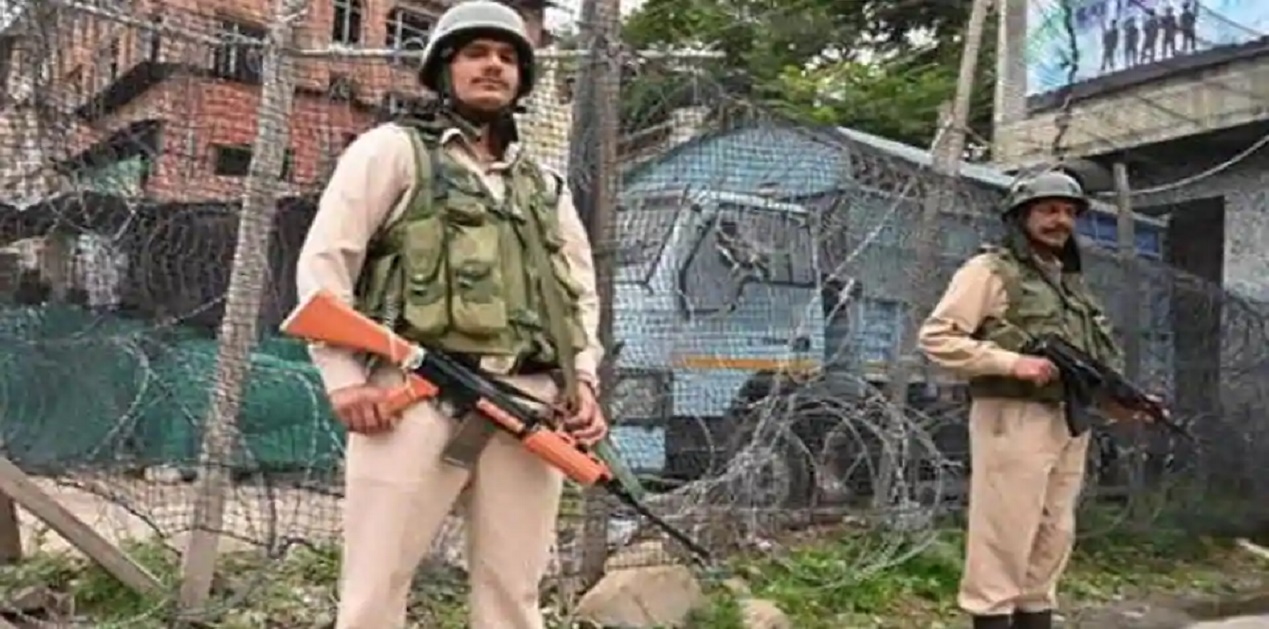


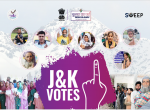

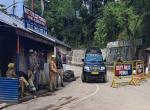
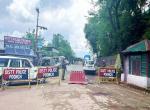
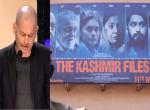
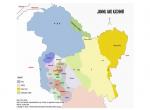
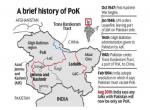
Post new comment